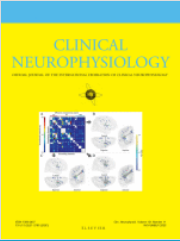 Sporadic inclusion myositis, an autoimmune disease, is the most common inflammatory myopathy after the age of 50. It results in slowly progressive muscle weakness, proximal (especially quadriceps) and distal (flexors of the fingers in particular). Muscle biopsy shows mixed, inflammatory and degenerative lesions.
Sporadic inclusion myositis, an autoimmune disease, is the most common inflammatory myopathy after the age of 50. It results in slowly progressive muscle weakness, proximal (especially quadriceps) and distal (flexors of the fingers in particular). Muscle biopsy shows mixed, inflammatory and degenerative lesions.
Publications had already mentioned, on histological and neurophysiological arguments, the possibility of associated neuropathy in a significant number of cases. However, the non-specific nature of the abnormalities observed and the often advanced age of patients with inclusion myositis, with frequent co-morbidities, complicate the interpretation of these data.
Confirmation and details
An Australian team conducted a new study including, for the first time, an assessment of the excitability of motor and sensory axons. It brought together 20 patients with inclusion myositis, an average of 70.8 years old. They underwent clinical assessment, muscular (sIBM weakness composite index (IWCI), quadriceps strength …) and neurological evaluations (modified clinical score for neuropathy …), and neurophysiological exploration. Their results, compared to results of control subjects, corroborate the existence of a frequent neuropathy concomitant with muscle involvement:
while most participants with inclusion myositis had few sensory signs or dysautonomia, 35% had abnormalities in nerve conduction and 50% had abnormalities in thermal sensitivity thresholds, already described in other studies;
the patients presented differences, compared to the control subjects, in terms of axonal excitability with a significant prolongation of motor (6.7 ms versus 6.3 ms) and sensory (3.8 ms versus 3.3 ms) latencies;
there was no correlation between the neurophysiological findings and the severity of the muscle involvement.
